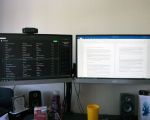- 1. Understanding the Basics of Building a Gaming PC
- 2. Essential Components For a Gaming PC
- 3. Choosing the Right Parts for Your Gaming PC
- 4. Step-by-Step Guide to Building Your Gaming PC
- 5. Common Mistakes to Avoid While Building Your Gaming PC
- 6. How to Set Up Your New Gaming PC
- 7. Where to Buy Components for Your Gaming PC
1. Understanding the Basics of Building a Gaming PC
Building your own gaming PC can be an exciting and rewarding project, especially if you’re a gaming enthusiast looking to create the perfect setup. While it may seem intimidating at first, with the right knowledge and tools, anyone can build a gaming PC that delivers great performance without the high price tag of pre-built systems.
Before diving into the technicalities of each component, it’s important to understand the core idea behind building a custom gaming PC. The advantage of building your own system is that you can select every part based on your preferences, such as performance, budget, and even aesthetics. Additionally, building your own gaming PC allows you to better understand how each component works and ensures that you have the most optimized machine for your specific gaming needs.
2. Essential Components For a Gaming PC
To get started, let’s break down the essential components needed for a custom gaming PC build. These are the building blocks that will determine how well your system performs in gaming and other tasks:
- CPU (Central Processing Unit): The CPU is the heart of your gaming PC. It handles all the calculations and instructions required to run your games and software. Choosing a high-performance CPU, such as Intel Core i7 or AMD Ryzen 7, will provide the processing power you need.
- GPU (Graphics Processing Unit): For a gaming PC, the GPU is arguably the most important component. It directly affects your gaming performance by rendering high-quality graphics. Consider popular options like NVIDIA’s GeForce RTX or AMD’s Radeon series for top-tier gaming experiences.
- Motherboard: The motherboard connects all the components of your gaming PC. Choose one that is compatible with your CPU and GPU, offers plenty of RAM slots, and supports modern connectivity standards like PCIe 4.0 for future-proofing your system.
- RAM (Random Access Memory): RAM stores temporary data that your PC uses to run programs. For gaming, 16GB of RAM is generally sufficient, but for more demanding applications, such as video editing or 3D rendering, you may opt for 32GB.
- Storage (SSD/HDD): An SSD (Solid State Drive) will provide fast boot times and quick loading for games. A larger HDD can be added for additional storage, but for gaming, prioritizing SSD for your OS and frequently played games is highly recommended.
- Power Supply (PSU): The PSU delivers power to all your components. Ensure your PSU has enough wattage to handle your GPU and other components. For most gaming builds, a 650W-750W PSU should be sufficient.
- Cooling System: To keep your system running efficiently, cooling is essential. Depending on your case, you can use air cooling or invest in a more advanced liquid cooling solution for better thermal management.
- Case: The case houses all your components. It should provide adequate airflow and space for your GPU and cooling system while offering good cable management features for easy assembly.
3. Choosing the Right Parts for Your Gaming PC
Now that you know the basic components, it’s time to choose the right parts. This is where you can personalize your gaming PC based on your specific needs and budget. Some factors to consider when selecting parts include:
- Performance vs Budget: Depending on your gaming needs, you may not need the most expensive parts. For casual gamers, a mid-range GPU like the NVIDIA GTX series may be more than enough. Hardcore gamers, on the other hand, may need the latest RTX series for 4K gaming.
- Future Proofing: You want your gaming PC to last several years without needing an upgrade. Choose a motherboard that supports future CPUs and GPUs, and invest in an SSD to ensure faster load times as games become more demanding.
- Compatibility: Double-check the compatibility between your CPU, motherboard, RAM, and GPU. The wrong combination could result in hardware conflicts, so research is crucial in making sure your parts fit together well.
- Aesthetics: Many gamers prefer a sleek, visually appealing setup. If aesthetics matter to you, look for cases with RGB lighting options and customizable cooling solutions that complement the look of your build.
4. Step-by-Step Guide to Building Your Gaming PC
Once you have all the necessary parts, it’s time to assemble your gaming PC. Here’s a basic step-by-step guide for beginners:
- Prepare Your Workspace: Find a clean, static-free surface to work on. Have your tools ready, such as a screwdriver and cable ties for neat cable management.
- Install the CPU: Begin by installing the CPU into the motherboard’s CPU socket. Make sure the CPU is correctly oriented, and secure it by locking the socket.
- Install the RAM: Insert the RAM sticks into the motherboard’s RAM slots. Press down until they click into place.
- Install the Storage (SSD/HDD): Mount the SSD into the designated slot on the motherboard, and install the HDD in the case’s hard drive bays.
- Install the PSU: Position the power supply in the bottom or top compartment of your case and secure it. Make sure all cables are accessible for connection.
- Install the GPU: Insert your graphics card into the PCIe slot on the motherboard and secure it with screws.
- Connect Everything: Now connect all power cables, data cables, and front panel connectors (USB, audio, etc.) to their respective ports on the motherboard and PSU.
- Test Your Build: Power up the system to ensure everything is connected and running smoothly. If it doesn’t boot, check all cables and parts for proper installation.
5. Common Mistakes to Avoid While Building Your Gaming PC
While building a custom gaming PC can be straightforward, there are common mistakes beginners should avoid. Some of these include:
- Forgetting Thermal Paste: Always apply thermal paste between the CPU and cooling unit. Without it, your CPU can overheat.
- Improper Cable Management: Poor cable management can block airflow, causing your components to overheat. Use cable ties to keep cables neat and organized.
- Incompatible Components: Double-check compatibility between parts, especially your motherboard, GPU, and PSU, before purchasing.
6. How to Set Up Your New Gaming PC
After assembling your custom gaming PC, the next step is setting up your operating system and installing your gaming software. Follow these steps:
- Install an OS: Install your preferred operating system (usually Windows for gaming). This will allow you to run games and software on your new PC.
- Install Drivers and Updates: Ensure all your hardware drivers (especially GPU) are up to date for optimal performance.
- Install Gaming Software: Install game launchers (Steam, Epic Games Store, etc.) and your favorite games. Optimize game settings for the best experience based on your hardware.
7. Where to Buy Components for Your Gaming PC
Buying quality components is essential for building a reliable and high-performance gaming PC. Some of the best places to buy your parts include:
- Amazon: A vast selection of components with customer reviews to help you make informed decisions.
- Newegg: A go-to online retailer for PC components, offering competitive pricing and great customer service.
- PCPartPicker: This website helps you compare prices, find compatible parts, and get the best deals.
- Local Computer Stores: Local stores may offer personalized advice and provide the ability to see parts in person before purchasing.
For more expert advice on PC building and repair, visit Computer Repair for all your gaming and tech needs.






























